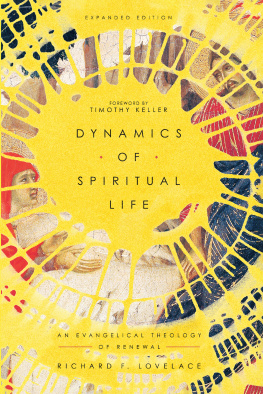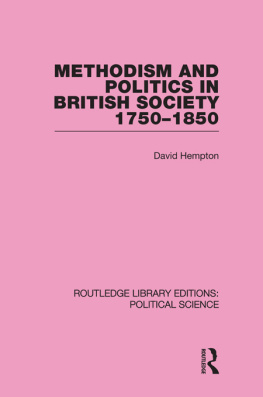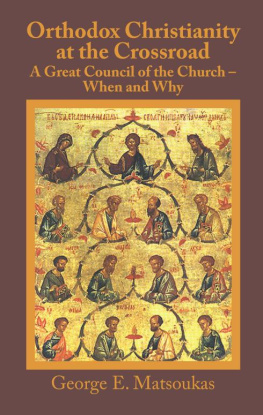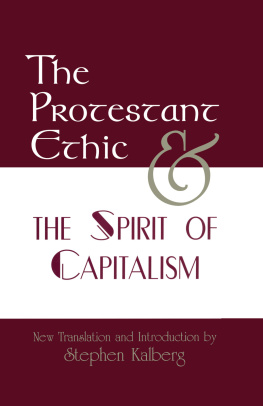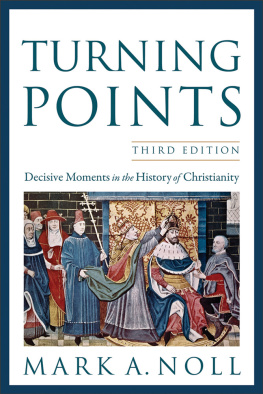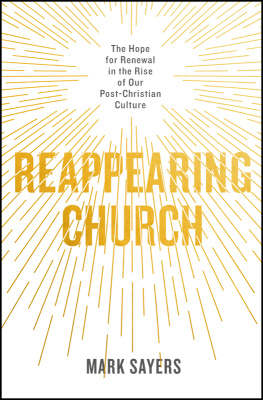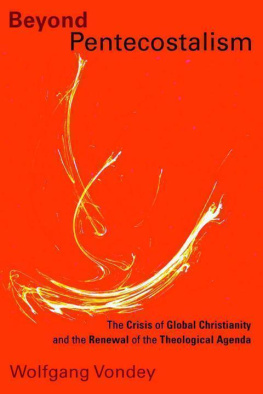James R. Hawkinson and Glen V. Wiberg,
who lived the Pietist option and so taught it to others.
Introduction
Come Back to Jesus
A fter a long day attending a Christian conference full of lively worship, big-name speakers, and a multitude of workshops, I (Mark) was exhausted. Id been taking notes all day long. Five steps to this, ten to that. How to pastor, lead, worship, teach, strategize, evangelizewhatever it is you want to do, with these few steps you can do it better. And Lord knows, there are plenty of things Id like to improve on. I took copious notes.
Late that night, after Id been asleep for several hours, I had a dream in which I looked up and heard God speaking to me. Mark! God called.
Yes, Lord, I answered.
Do you want to know the steps to a vital life and a vital church?
Yes, Lord! Yes! I exclaimed. And in my dream I grabbed the notebook Id been carrying around all day, took out a pencil, and wrote Steps to a Vital Life and a Vital Church at the top of a blank page and then a number one just under the heading. I looked up with anticipation.
Come back to Jesus, God said.
Come back to Jesus, I wrote. Then, penciling in a number two on the line below, I looked up again to hear the next step.
And I woke up.
No! I exclaimed to myself and to God. Please, Lord! What is number two, and three, and four? What are the rest of the steps?
But there was no answer, no way to get back into the dream, no way to go back to sleep for quite a while. Come back to Jesus was all I heard.
After getting up, I spent the day at the conference attending yet more seminars, but my head and heart were elsewhere, thinking, praying, and wondering about the dream.
It wasnt until later, as I listened to the evening concert, that it struck me: there is no step number two, or three, or four. Just this one. Always this one. Come back to Jesus.
Movements of the Holy Spirit
Again and again through the centuries there have been fresh movements of the Holy Spirit to bring new life to the church and new hope to the world. For all their complexities, at the heart of every one of these movements has been this simple call to come back to Jesus: to center our lives, relationships, ministries, and mission clearly and consistently on him who alone is the way, the truth, and the life (Jn 14:6).
Five centuries ago one such movement took shape in central Europe: the Reformation. Martin Luther and other Protestant Reformers preached salvation by grace alone, translated the Bible into the languages of everyday life, and encouraged all believers to see themselves as part of a common priesthood. At the same time, their Catholic brethren experienced their own reformation thanks to innovative leaders such as Ignatius Loyola, whose Jesuits founded schools and universities in Europe and brought the gospel to Asia and the Americas.
By the late seventeenth century, such reforming energy had been spent. Instead Christians fought each other in a series of wars that left behind competing churches more concerned with maintaining doctrinal boundaries than encouraging evangelism, spiritual growth, or social reform. But once again a new movement emerged to turn Christians back to Christ. It was called Pietism.
Historians credit the Pietists warm-hearted devotion to Jesus with reviving the cold, harsh, bickering Christianity of the time. While it started in whats now Germany, Pietisms influence could be felt around the world, from India to Greenland, England to the Caribbean. Some scholars even suggest connections with African American Christianity and the global movement of Pentecostalism. Now, over three hundred years later, we believe that the spirit of Pietism can again help Christians come back to Jesus, as God once more renews his church and revitalizes its witness to the world.
Pietism as Movement and Ethos
A couple summers ago I (Chris) took a trip to Iowas Rathbun Lake for a reunion of my wifes family. Its a part of the state whose chief claim to fame in American religious history is that Mormon pioneers passed through in 1846 en route to the Great Salt Lake. But that landscape is also dotted with artifacts of Pietism, what theologian Roger Olson says was once the main form of Protestantism on this continent.
Even if you lived there, you might not think of Appanoose County as a historic center of Pietism. How many people in the town of Moravia (population 665) know that its founders were part of a movement that had been reenergized in the eighteenth century by a Pietist aristocrat named Nikolaus von Zinzendorf, the godson of Philipp Jakob Spener, the founder of German Pietism? Or that a Methodist church stands at the corner of North and William Streets because one day in 1738 an Anglican priest named John Wesley felt his heart strangely warmed while attending a Moravian meeting in London? How many of the Brethren who gather at a white-washed church nestled in the cornfields south of Unionville, or their Grace Brethren cousins who used to meet in nearby Udell, can tell the story of their founder, Alexander Mack, who fused Pietism and Anabaptism thirty years before Wesleys conversion?
For some, this is Pietism: a chapter in church history that has closed, leaving behind aging artifacts and obscure answers to trivia questions. Pietism, according to its Wikipedia entry, had almost vanished in America by the end of the 20th century.
Were convinced theres a bright future in all that hidden history, but this summary does point out how, as a movement, Pietism flared brightly in late seventeenth- and early eighteenth-century Germany, then faded away. Suspicious of faith becoming too institutional or too intellectual, Pietists did not generate the denominational structures or doctrinal documents that would have set up their movement for long-term survival.
Pietism has disappeared not because it failed, but because it succeeded.
But heres the crucial point: Pietism has disappeared not because it failed, but because it succeeded. Mennonite historian Steve Nolt describes Pietism as leavening later religious movements such as the Grace Brethren. Its an insightful, Jesus-style, kingdom of Godrevealing metaphor (see Mt 13:33). In bread making yeast does its magic subtly, bringing out the potential of the other ingredients while leaving little of its own presence behind. Likewise, Pietism can work its way into a Christian movement, enhancing whats already there while leaving few traces of itself.
This moves us away from thinking of Pietism as a particular historical movement that came with Spener and Mack and went with Zinzendorf and Wesley. Instead, it points to Pietism as a timeless spirit, or ethos. This ethos, write Roger Olson and Christian Collins Winn, transcends denominations and even traditions: it pops up in all kinds of Christian movements, organizations, and individuals. What they say of Zinzendorfs intention for his movement we would claim for Pietism in our time: Moravianism existed to renew the whole church, and should it succeed, it would pass away, having fulfilled its calling.
As an ethos that leavens different flavors of Christianity, Pietism has proven to be remarkably adaptable. Baptist historian Virgil Olson doubted that Pietism could be perpetuated for very long. But he trusted that the spirit of Pietism would regain its strength whenever people grew dissatisfied with superficial Christianity whether it be found in rotting formalism, a thinned-out evangelism or a misfired scholasticism, or anything else that has the form of piety and lacks the power thereof [2 Tim 3:5]. In other words, Pietism calls people back to Jesus when and where its most neededwhether seventeenth-century Germany or twenty-first-century America.






